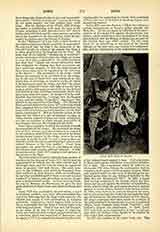www.catholic.com/encyclopedia/loryma


Click to enlarge
Loryma, a titular see of Caria, small fortified town and harbor on the coast of Caria, not far from Cape Cynossema, at the western extremity of Rhodian Chersonesus, opposite to and twenty Roman miles from Rhodes (Strabo, XIV, 652, Ptolemy, V, 2, 8; Tit. Liv., XXXVII, 17; XLV, 10). Nothing is known of its history, but Leake (Asia Minor, 223) mentions its ruins: towers, tombs, and ramparts, west of Port Aplothiki, vilayet of Smyrna. The “Notitise episcopatuum” mentions Loryma among the suffragan sees of Stauropolis up to the twelfth and thirteenth centuries. Lequien (Oriens christianus, I, 915) names three bishops: George, present at the Council of Constantinople, 680, Anthimus at Nicaea, 787, and Joseph at Constantinople, 879.
S. PETRIDES
Enjoying this content? Please support our mission!Donatewww.catholic.com/support-us

